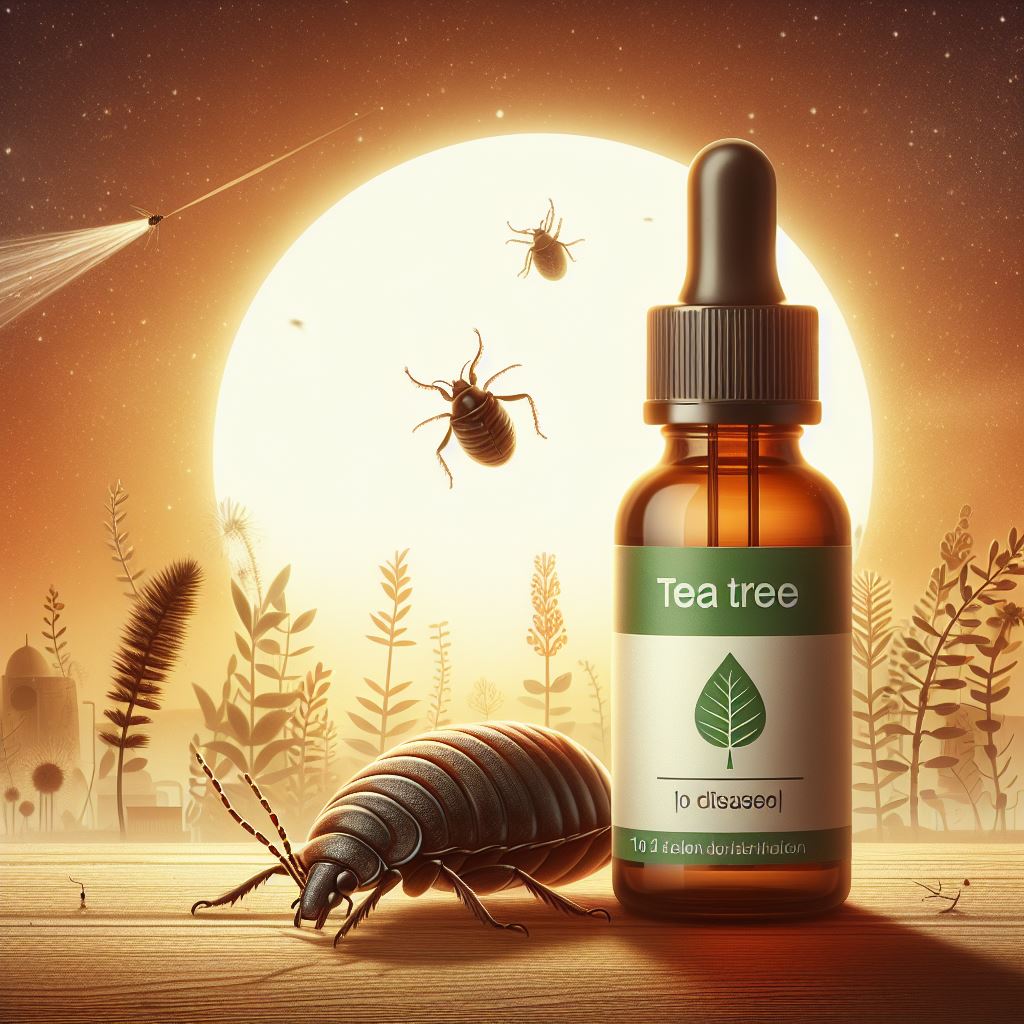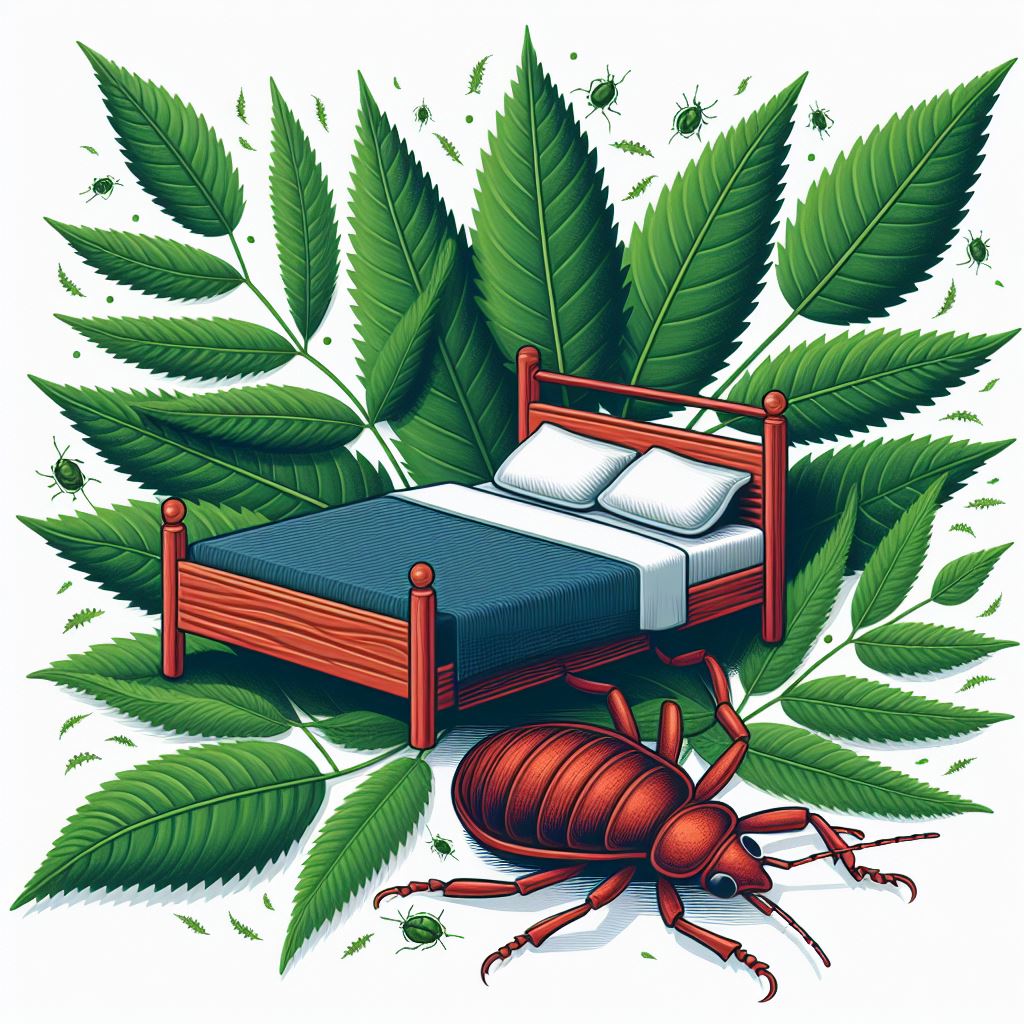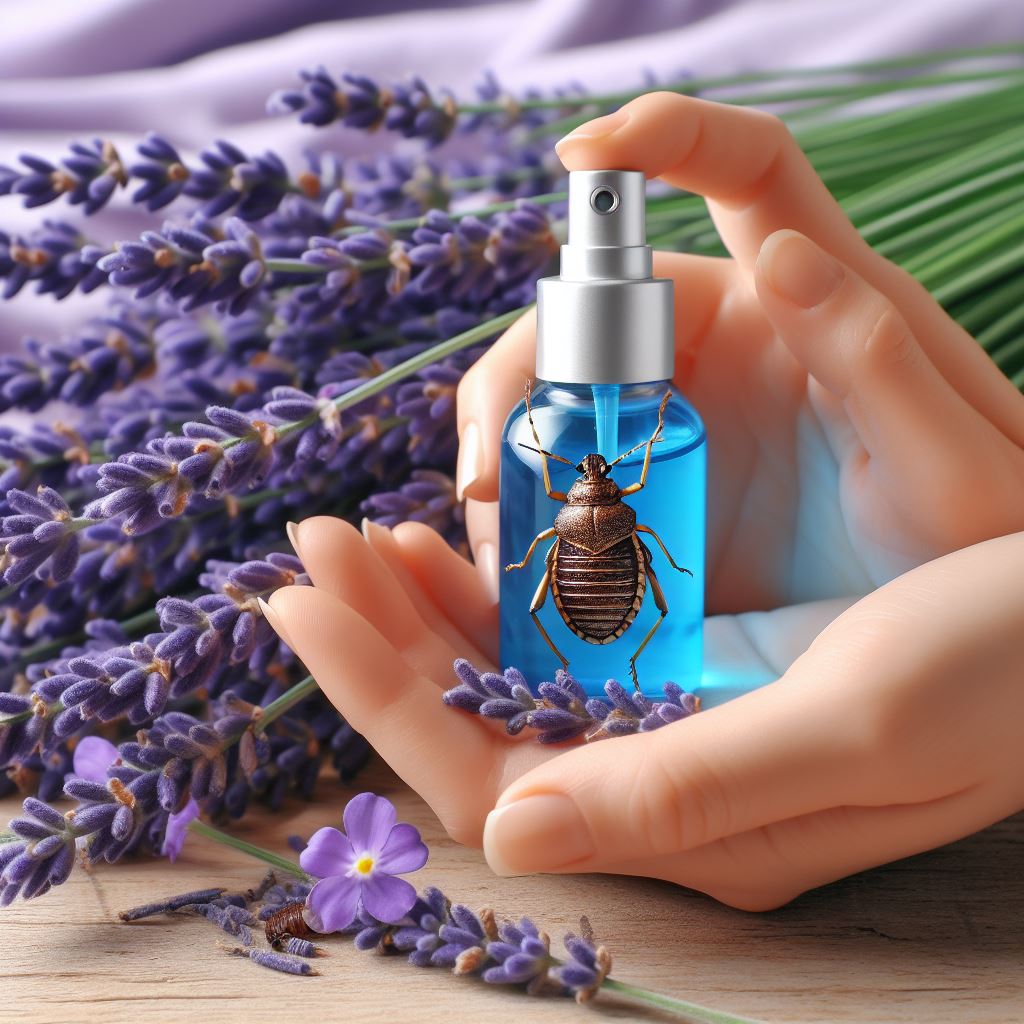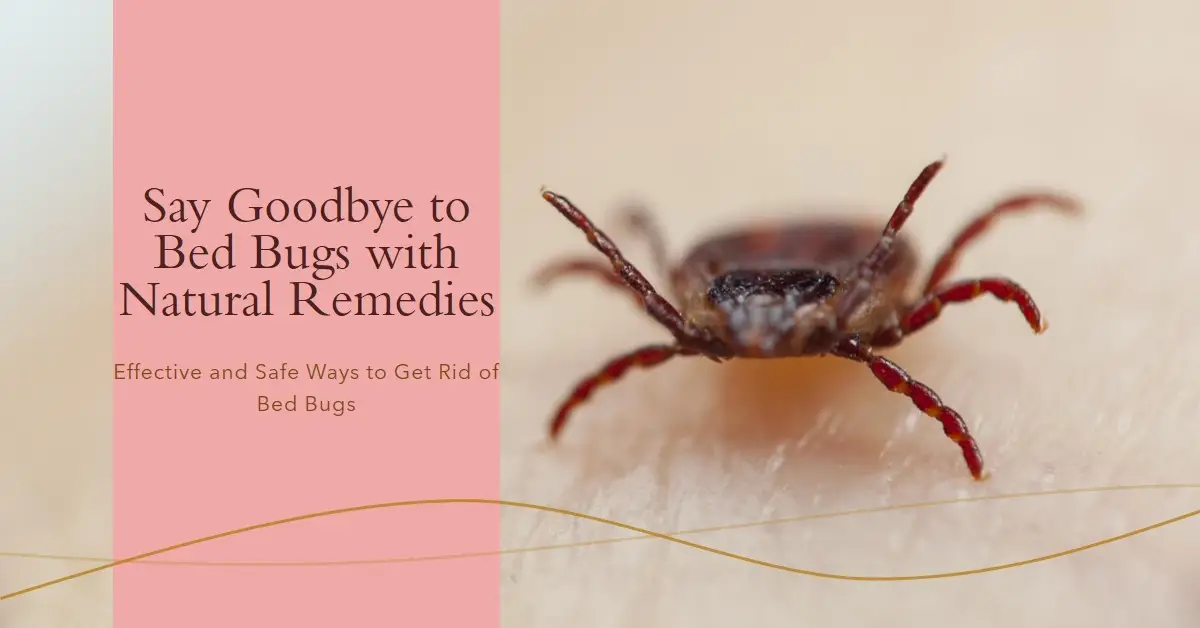Leggings Depot Women's Relaxed-fit Jogger Track Cuff Sweatpants with Pockets for Yoga, Workout
$17.99 (as of April 15, 2024 09:29 GMT +00:00 - More infoProduct prices and availability are accurate as of the date/time indicated and are subject to change. Any price and availability information displayed on [relevant Amazon Site(s), as applicable] at the time of purchase will apply to the purchase of this product.)Dealing with bed bugs is every homeowner’s nightmare. These sneaky little pests infest mattresses and bedding, causing itchy bites and sleepless nights.
While powerful chemical pesticides seem like the obvious solution, dousing your sleeping space with toxic compounds carries health risks. Plus bed bugs have grown resistant to common insecticides found at hardware stores.
That’s why many people now seek natural bed bug remedies to banish the blood-sucking insects without hazardous chemicals.
In this guide, I’ll share highly effective home remedies, treatments, and prevention tips that use safe ingredients to get rid of bed bugs naturally.
You’ll learn cost-effective solutions you can implement immediately using common household items. I’ll also overview commercial natural bed bug products that utilize plant-based essential oils and minerals rather than dangerous poisons.
Implement these natural fixes to kick bed bugs out of house safely without spending big on professional extermination fees. Let’s eradicate those pesky hitchhikers together!
Understand the Enemy: Bed Bug Biology and Behaviors
If we want to banish bed bugs safely utilizing natural ingredients, it helps to first understand our tiny adversary.
Here are key bed bug traits that reveal weaknesses we can target:
- Feed solely on blood, needing 3-5 meals to fuel reproduction
- Bite exposed human skin mostly when sleeping
- Hide in dark crevices near beds and furniture during daylight
- Can survive months without feeding
- Lay 1-5 eggs per day, with each female producing 200-500 offspring in her lifetime
- Prefer fabric, wood and paper materials for harborage
- Travel between rooms via bags, shoes, laundry
As you can see, bed bugs have quite the reproductive capacity! That’s why getting on top of infestations quickly is vital before exponential population booms.
Natural and chemical solutions focus on either killing bed bugs directly, discouraging harborage through inhospitable surfaces, or preventing migration pathways room to room.
Next I’ll cover home remedies that harness essential oils, desiccant dusts, temperature extremes and other natural elements that exploit bed bug vulnerabilities without toxic chemicals.
Kill Bed Bugs With Natural Essential Oils

Certain potent essential plant oils have insecticidal effects against bed bugs without harming people or pets. That makes essential oil solutions ideal natural treatments for spaces needing to remain chemical-free.
Let’s explore the top essential oils proven highly effective against bed bug populations:
Tea Tree Oil

Tea tree oil comes from the Melaleuca alternifolia plant native to Australia.
Research shows that tea tree oil kills ~80% of bed bugs in direct spray contact scenarios. It’s believed the natural oil suffocates the insect’s spiracles (breathing pores). The effects can persist on surfaces for 11+ days, providing ongoing exposure risk.
How To Use Tea Tree Oil
Create a simple tea tree bed bug elimination spray by following these steps:
Supplies Needed:
- Tea tree essential oil
- Water
- Spray bottle
- Fill spray bottle with water ~3/4 full
- Add 18 drops tea tree oil
- Shake bottle to mix solution thoroughly
- Test fabric compatibly before broad spraying
- Mist known bed bug aggregation areas (bed frames, headboards, furniture crevices etc)
- Allow surfaces to dry fully before remaking beds (avoid skin contact)
- Respray every 3 days for 2 weeks to kill newly hatched bed bugs
For severe infestations, tea tree oil works even better paired with…
Neem Oil

The neem tree also contains powerful medicinal compounds effective against insects thanks to its azadirachtin contents.
Like tea tree oil, neem oil solutions disable bed bug breathing and mess with their hormone regulation to prevent molting, mating and egg laying.
Studies analyzing neem solutions report 70%+ bed bug mortality rates upon direct exposure. It also shows lasting residual activity killing bugs for 2+ weeks post application.
How To Use Neem Oil
Whip up a DIY neem oil anti-bed bug spray with:
- Neem oil – cold pressed and organic
- Water
- Spray bottle
- Mild natural soap (Castile recommended)
Then:
- Fill spray bottle with lukewarm water
- Add 1 tsp neem oil
- Mix in 1/2 tsp natural soap
- Agitate vigorously to emulsify
- Spot test on fabrics before spraying broadly
- Mist known bedbug areas targeting crevices
- Reapply weekly to combat reinfestation
The soap helps the hydrophobic neem oil mix evenly with water for max coverage.
For an extra punch, blend both neem and tea tree oils together into a super emulsion! Just do so cautiously checking compatibility with your fabrics first in discrete spots.
Clove Oil

Clove buds produce extremely potent eugenol phenol compounds through steam distillation.
As a natural insecticide, clove oil damages bed bugs nervous systems and digestion lined with exposed epithelial membranes vulnerable to hydrophobic oils.
Clinical tests confirm clove oil vapor effectively kills bed bug populations harboring inside furniture cracks at remarkable 97%+ rates after continuous exposure. The kicker? Zero negative impacts to mammals sharing that same environment.
How To Use Clove Oil
Clove oil makes an outstanding bed bug fumigation treatment:
Supplies Needed:
- Clove oil
- Spray bottle
Simply mix a few drops into water and mist onto infested areas. As it evaporates from surfaces, clove oil vapor permeates hiding spots to asphyxiate and neurotoxin bugs hiding within.
Pro Tip: Load absorbent natural diatomaceous earth powder in furniture voids first before misting exterior surfaces with clove mix so the evaporating vapors carry DE dust inward for max impact.
Lavender Oil

Famous for its relaxing aromatic properties, lavender oil also chases away pests.
Studies found lavender oil solutions kill ~95% of immature bed bugs and prevent adult mating through sensory disruption. The vapor acts as a bug repellent.
How To Use Lavender Oil
Lavender oil makes a multipurpose bed bug combatant:
- Lightly mist bedbug migration pathways as repellent
- Add a few drops onto cotton balls inside furniture voids to fumigate through volatile vapor
- Spritz lavender solution along baseboards perimeters to deter spread
You benefit from calming lavender aroma along the way!
Diatomaceous Earth Kills Bed Bugs Naturally
Beyond essential oils, powdered diatomaceous earth serves as a natural desiccant dust lethal to bed bugs while completely safe for humans and animals.
Composed of fossilized aquatic organisms, food-grade DE powder feels like talcum but acts like razor shards at the microscopic level.
The sharp silica scrapes away protective coatings from bed bugs as they crawl across surfaces dusted with diatomaceous earth powder.
This causes deadly dehydration as water uncontrollably escapes the bug’s body through damaged membranes. They die within 48 hours yet pose no toxicity risks to children or pets sharing treated spaces.
How To Use Diatomaceous Earth
Applying diatomaceous earth appropriately allows it to work flawlessly killing bed bugs:
Supplies Needed:
- Dry applicator like a paint brush or puffer bulb
- Food-grade diatomaceous earth (silica content >90%)
- Gloves and dust mask
Then simply:
- Lightly coat bed bug harborage areas with thin DE powder layer using brush or bulb tool
- Focus on crevices in bed frames, furniture voids, cracks along baseboards, etc
- Leave powder in place to kill ongoing infestations vs wiping clean
- Reapply fresh dust every 2-3 weeks as it gets soaked into greasy areas
- Avoid breathing clouds – contain and ventilate work areas
Pro Tip: Layer DE dust beneath mattresses and box spring covers to shred invading bugs. Also apply perimeter bands around each bed leg to shred bed bugs seeking blood meals from sleeping victims upstairs.
Diatomaceous earth remains enormously effective obliterating bed bugs for cheap as a natural remedy. Just take safety precautions minimizing dust exposure during treatment.
Heat Treatment Eradicates Bed Bugs
As ectothermic insects, bed bugs require ambient temperatures within ~70°F to 100°F to survive. Sustained heat beyond 105°F literally bakes bed bugs to death by denaturing their cellular proteins.
Performing thermal heat treatments takes advantage of this thermal intolerance using appliances to rapidly warm infested rooms above 115°F to kill all life stages including eggs.
Combined with desiccant dusts that prohibitive bed bugs from escaping target zones, properly administered heat can exterminate entire infestations in one session without using chemicals.
Bed Bug Heat Treatment Best Practices
Here are tips for safe and effective thermal elimination of bed bugs:
- Heat large open spaces to at least 120°F minimum (use thermometers to verify)
- Maintain hot temperatures for 8+ hours steadily
- Remove heat-sensitive items beforehand like wax, vinyl, plants
- Contain treatment areas best possible by sealing egress points to trap bed bugs
- Use insulation like plastic sheeting for quicker heat buildup
- Arrange multiple portable electric heaters to avoid cold spots
- Rotate fans continuously so heat spreads evens rather than concentrating near heaters
- Be extremely cautious not to ignite fires – continuously monitor heaters!
Done properly, thermal bed bug treatments biologically eliminates every life stage through non-toxic means. Just take safety precautions when applying concentrated heat indoors for long durations.
Prevent Bed Bug Infestations
They say an ounce of prevention is worth a pound of cure when it comes to bed bugs. Stop infestations before they start by implementing these proactive protections:
Inspect Secondhand Furniture
Bed bugs easily hitchhike inside crevices whenever used furniture, mattresses or clothing gets introduced into a home.
Visually inspect all secondhand goods first and ask questions to determine origin and storage conditions. Pass on items with questionable history or stored in unclean sheds/garages.
For expensive furniture difficult to replace, use a bed bug sniffing dog to diagnose signs of historical infestation hiding within internal structures. Remediate or avoid transporting into dwellings.
Isolate Luggage After Travel
Bed bugs occasionally infest hotels and apartments despite best practices. After returning from trips:
- Leave luggage sealed in large plastic bags out in the garage or outdoor shed for a week before unpacking inside
- Thoroughly inspect and vacuum all luggage prior to bringing inside post-travel
- Immediately launder all clothing via high heat dryer cycles to kill bed bugs or eggs
Install Mattress Encasements
Waterproof zippered mattress and box spring encasements prevent bed bugs from infesting the insides of bedding during bites. They also entomb existing populations inside eventually causing death.
But encasements alone won’t stop external bed bugs from feeding through the fabric. Use in combination with other remedies like interceptor traps, DE dust barriers and essential oil repellents.
Apply Caulk to Crack and Crevices
Seal areas bed bugs could secretively harbor inside with acrylic caulk and sealant:
- Fill gaps along baseboard trim
- Seal tiny crevices on wood furniture
- Repair peeling wallpaper seams
Eliminating access to isolated voids forces bed bugs into exposed areas where other remedies can eliminate them.
Employ Monitored Traps
Strategically placed bed bug pitfall traps lure wandering insects into containment with pheromones and heat cues. Traps confirm presence and measure population spread while intercepting migrating bugs.
But avoid passive traps alone thinking they’ll solve heavy infestations without paired treatments. Support them using essential oils, desiccant dusts and heat.
When To Call A Bed Bug Exterminator
While home remedies can successfully combat bed bug troubles, extensive infestations embedded inside walls or floorboards often demand professional chemical interventions combined with thermal heating to fully eradicate.
Telltale signs you may need to call in back up:
- Visible bed bugs after thorough cleaning and natural treatments
- Repeated biting over months indicating reproduction
- Self remedies become exhaustively labor intensive
- Risk bed bugs migrating to adjoining units in dense housing
In those cases, consider licensed exterminator to blast the bed bugs and their sneaky harborages. Just be sure to vet treatment plans so no one in the household has chemical sensitivities.
Some firms offer “natural” bed bug services utilizing the non-toxic weapons outlined here. See if combatting infestations using heat, desiccants, essential oils etc without pesticides remains effective before escalating to hazardous methods.
Be Bed Bug Free Through Natural Prevention and Treatment
Hopefully this gives suffering home owners ample tools and knowledge needed to tackle bed bug problems without dangerous chemicals.
Remember prevention is easiest through diligent inspection and isolation practices not bringing infested items onsite.
But when confronting existing invasions, consistently wield essential oils, diatomaceous earth dust, heat treatment and other natural remedies to systematically annihilate the blood sucking pests hiding in your home.
Implement these safe best practices and you’ll reclaim peaceful nights sleeping bed bug free!







